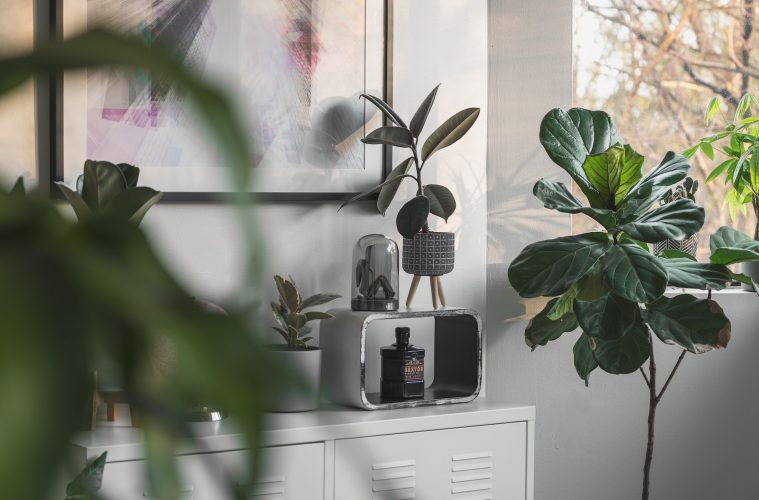If you’re searching for an impressive, towering indoor tree to make a statement, fiddle leaf figs are a fantastic option. However, if you have pets, you should reconsider your decision. Not all houseplants are safe for pets, including the beloved fiddle leaf fig.
Let’s look at the signs of fiddle leaf ingestion and how to prevent your pets from coming into contact with this common houseplant.
Why are fiddle leaf figs toxic?
Members of the Moraceae family, including the fiddle leaf fig, contain a white milky sap in their stems with calcium oxalate crystals. This same compound is also found in other common houseplants like Philodendrons.
These crystals have sharp edges that can cause irritation and a range of issues if ingested. While small doses usually result in mild effects and don’t pose long-term issues, they can still negatively impact you or your pets.
It’s crucial to wash your hands immediately after handling the plant’s sap during tasks like pruning or propagating and avoid touching your eyes or mouth, as well as keeping the plant away from animals.
What are the signs of fiddle leaf fig ingestion in pets?
Keep an eye out for bite marks or unusual scratch marks on the stems or soil of your fiddle leaf as the first sign of a problem. Pests can also create holes that resemble bite marks, so be sure to check for any insects before examining your pets.
In cats and dogs, the second warning sign is mouth swelling, drooling, or general irritation. They may paw at their faces or lick around their mouths, indicating discomfort.
If the issue persists, your pet may cease eating or drinking due to the oral irritation. If the calcium oxalate crystals reach the stomach and intestines, they may experience vomiting or diarrhea. Your pets may also become dehydrated and generally tired or weak.
What to do if your pet eats a fiddle leaf fig
If any of these issues pop up, take your pet to the vet promptly. The veterinarian will evaluate the problem and recommend the best course of action.
Examine the plant to determine how much sap your pet has consumed. Keep track of the duration since the onset of symptoms to provide the vet with a sense of the problem’s magnitude.
At first, the vet will cleanse your pet’s mouth to eliminate any leftover residue. They will then conduct tests based on the symptoms to determine which organs are impacted and prescribe appropriate treatment.
How to prevent pets from ingesting fiddle leaf figs
To prevent any visits to the vet, the best approach is to prohibit your pets from accessing your fiddle leaf fig entirely.
Experiment with these suggestions to see what works for your home:
Move it out of reach: This may not be simple for taller trees, but it is the most effective approach. You can also prune the lower leaves to shape the tree and keep the foliage out of your pet’s sightline.
Training: Not all pets respond quickly to training, but keeping a spray bottle filled with water on hand can help deter them from the tree.
Citrus: Cats and dogs dislike citrus, and strong citrus scents can typically repel them. Leave some lemon or orange peels near the pot or coat it with citrus essential oils, avoiding the soil to prevent root damage.
Featured image: Scott Webb via Unsplash


